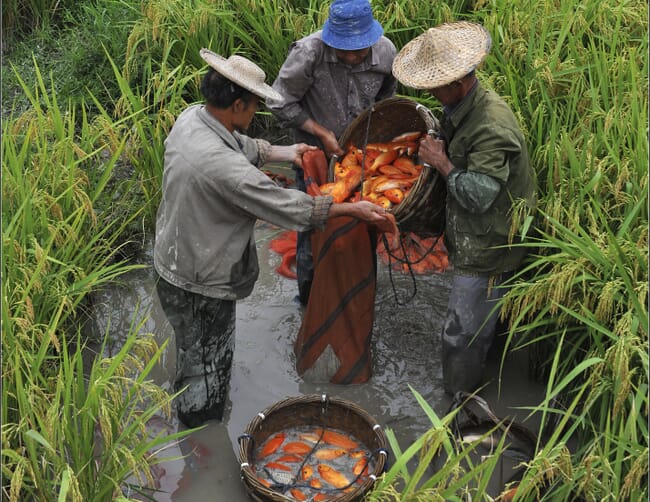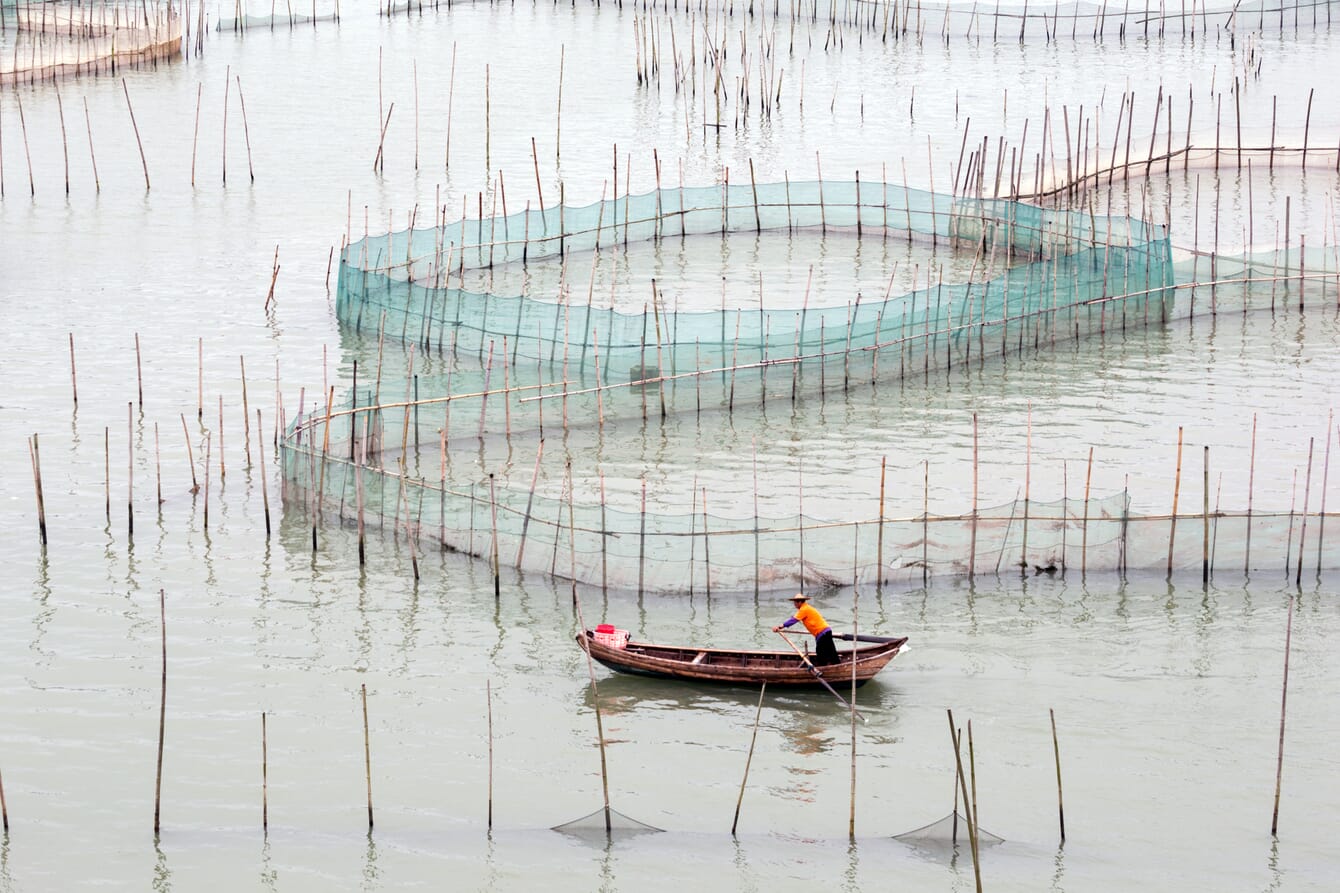
© FAO
This point was brought home by a recent meeting between The Fish Site and two of China’s leading experts in IMTA – Professor Shuanglin Dong, head of the aquaculture ecology group at the Ocean University of China and Professor Jianguang Fang from the Yellow Sea Fisheries Institute.
The event was organised by Patrick Sorgeloos, from Ghent University, who pointed out that aquaculture was both relatively new to the West and that it also tended to be dominated by monocultures – of species such as trout, salmon, sea bass, sea bream, mussels and oysters.
On the other hand he noted that China not only has a much longer history of aquaculture, but has also been much more adept at producing multiple species in a single area or system – adopting principles including polyculture and IMTA. As Prof Sorgeloos pointed out, such practices can bring numerous advantages – including boosting the sustainability of the system, recycling nutrients and increasing productivity.
Professors Dong and Fang gave presentations that reinforced how integral the concept that is now widely known as IMTA has been – and is currently – in Chinese aquaculture. Indeed, they noted that around 80 percent of freshwater aquaculture in China is currently produced in polyculture systems, while the figure is around 50 percent for marine aquaculture.
Background
This has not always been the case, farming of common carp was first recorded in China 8,000 years ago, noted Prof Dong, while the practice of cultivating carp in rice paddies has taken place from at least 900 AD. However, it was soon after the foundation of the People’s Republic of China in 1949 that the growth of Chinese marine aquaculture really began to take off. The initial focus was on monoculture, but in 1975 the co-culture of kelp and molluscs was successfully trialled and by the 1980s polyculture began in earnest. By the turn of the new millennium IMTA began to gain popularity.
Integrated aquaculture systems
Prof Dong explained the wide range of integrated aquaculture systems currently being deployed in China and their advantages – notably the ability of such systems to reclaim waste; the maintenance of water quality; the efficient use of resources; and their ability to reduce disease outbreaks.
Examples of IMTA currently being widely used in China include the production of shrimp, clams and the red alga Gracilaria in pond systems. “In this system one species is another’s food or nutrition,” he explained. Another involves shrimp, razor clams and tilapia and Prof Dong showed that this could double overall production and reduce nitrogen levels in the water by 86 percent.

© Chen WS, Shutterstock.com
Another intriguing example he highlighted was the co-culture of puffer fish and shrimp – in which the puffer fish prey on weak shrimp, thus preventing outbreaks of diseases including whitespot (WSSV).
Prof Dong then noted that integrated aquaculture has several forms – one relating to the integration of different species, another to the integration of different systems.
Integration of species
An example of spatial integration includes growing kelp on ropes in the top layer of the water column, scallops in lanterns in the middle layer and sea cucumbers on the benthic layer. Meanwhile rotary systems include stocking shrimp and crab in the same ponds, harvesting the shrimp first, then the crabs – resulting in an overall increase of harvest. Temporal integration includes growing shrimp in the warmer months, then stocking Mandarin fish in the same ponds after the shrimp have been harvested.
Integration of production systems
The integration of different systems includes partitioned set-ups, in which fish, oysters, shrimp and seaweeds are all produced in separate, but connected ponds. Others are fish-rice culture, aquaponics, fish-fowl, fish-chickens, fish-pigs, fish-amphibians; and aquasilviculture in mangroves.
“China has the largest population in the world. We need more seafood. Moreover, mankind is facing the treble, crucial challenges of population growth, environmental pollution and global climate change. So we urgently need a process that can increase production, reduce waste and receive energy continuously. Now we need reasonable, acceptable and workable solutions,” emphasised Prof Dong.
One option, according to Prof Dong, is the ecological intensification of aquaculture systems (ELIAS) – a means to “improve the overall efficiency and productivity of aquaculture systems through the rational integration of anthropogenic inputs and ecosystem services”.
Solar recirculating aquaculture systems
One such example is the emerging concept of the solar recirculating aquaculture system (SRAS).
“Most RAS are highly artificial systems and do not take advantage of potential ecosystem services, such as photosynthesis. This means that these systems are constrained by higher carbon footprints and high costs. To overcome the barriers of higher operation costs and waste removal RAS should be integrated with ecosystem services – like nutrient recovery through photosynthesis of aquatic plants.
“Aquatic plants in RAS can absorb organic nitrogen, release dissolved oxygen and may serve as a commercial product,” he observed.
While SRAS systems are still, Prof Dong noted, at an early stage, he believes that these have considerable long-term potential.




